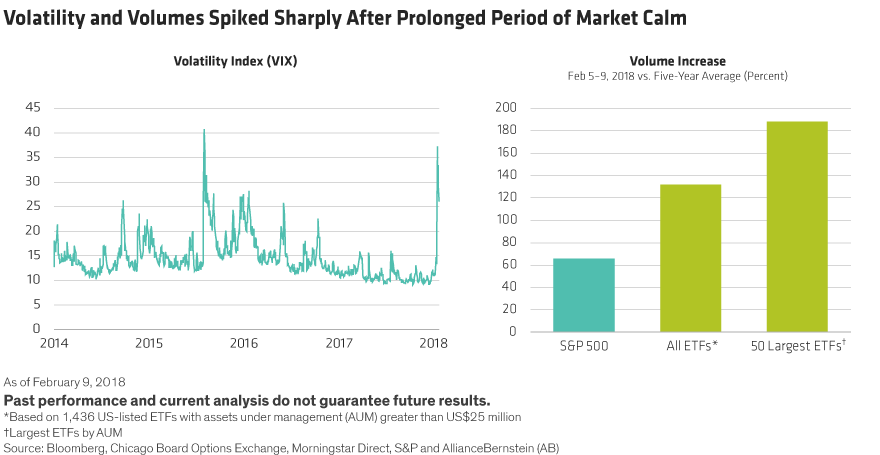Above-trend growth could cause U.S. inflation later in 2018
by Rob Waldner Chief Strategist and Head of Multi-Sector, Invesco Fixed Income, Invesco Canada
Employment growth has been strong enough that the Bank of Canada (BOC) hiked its overnight target rate to 1.25% in January.1 The BOC statement attempted to balance the view that growth was near capacity with concerns that raising rates too quickly could cause the economic expansion to stall. The 10-year yield has broken through its previous peak of 2.15% on the growth story and a modest pickup in inflation.2 We believe yields should continue to move higher from these levels.
U.S.
We expect U.S. interest rates to be range-bound in the first half of 2018, but with a risk of higher yields in the second half. Our rates view is driven by our analysis of growth, inflation and monetary policy in the U.S. and globally. Our models estimate that US growth approached a near cycle high at just above 3% in the fourth quarter of 2017. Growth should remain strongly above trend at 2.75%3 in 2018.
Inflation is likely to remain low for the first half of this year. Headwinds facing the housing and auto markets could drag down inflation, causing it to remain lower (around 1.8%3) than most have predicted in 2018. We expect the Federal Reserve (Fed) to hike rates twice this year, representing a gradual rate of policy tightening that is unlikely to impact the economy. However, if we see persistent wage increases going forward, similar to the wage pickup in January, we may raise our inflation forecast for 2018 above our current expectation of 1.8%.3
Treasury supply may increase in 2018, driven by increased government spending and smaller Fed bond purchases as quantitative easing (QE) is tapered. This supply increase will likely present a headwind for yields later in the year. If our view on persistent low inflation is correct, the yield on the 10-year U.S. Treasury should remain capped at around 2.65%3 in the first half of 2018. However, if wages continue to rise sharply, the Fed hiking cycle may extend into 2019 and 2020, and at a faster-than-expected pace. Increased expectations of further rate hikes in the medium term and perceived higher inflation risk could steepen the U.S. Treasury yield curve and push interest rates higher.
Europe
The positive growth impulse continues in Europe, although euro-area inflation was less than forecast in December. Nevertheless, the European Central Bank (ECB) minutes presented an optimistic view on inflation and clear signs that forward guidance on QE tapering appears likely in the near future. Hawkish comments from policymakers have also dominated public debate recently, although some have raised concerns over the euro’s strength. Bund yields have sold off slightly since the start of the year in a sign that the market is preparing for policy normalization. Some economists have also brought forward their estimates of when the ECB will set an end date for its bond-buying program. While no action is likely in January, we expect the ECB to announce an end date by June.
U.K.
Brexit uncertainty continues to dampen business and consumer confidence, however, the economy is not collapsing despite negative real wage growth and slowing house price gains. Trade talks with the European Union (EU) are yet to get underway, but calls for a second referendum (on the final deal) are intensifying. With the clock ticking down on the U.K.’s March 2019 departure date, our base case is that there will be a “can kick,” or delay in a final agreement. This could result in the U.K.’s membership in the EU being temporarily extended. Signs that the status quo will remain for an additional two years or so would likely restore confidence and lead to implementation of deferred investment. Regarding monetary policy, we expect one rate hike in 2018 and one more in 2019. With Brexit edging closer to a more amicable solution and the global economy picking up, there is a growing probability that market participants will price in more hikes in the coming months.
China
China’s onshore government bond yield curve bull steepened in January 2018, thanks to easier liquidity conditions and improved sentiment. The People’s Bank of China (PBOC) has been somewhat more generous in terms of liquidity injection, but onshore investors remain cautious. This is reflected in the steeper 10-year part of the government yield curve. Financial regulatory tightening has pressured nonbank financial institutions, thus, we see limited room for the PBOC to tighten liquidity further from here. We continue to find attractive opportunities in onshore government bonds. If tax implications are considered, government bond yields are appealing compared to lending rates, in our view. With new asset management rules and liquidity management guidance in place, we expect demand for government bonds to pick up.
Japan
The Japanese economy continues to perform well. Exports have especially benefited from increased global demand. We expect this trend to continue for the foreseeable future. In the near term, the market focus will likely be on spring wage negotiations. Prime Minister Abe is pushing companies to provide meaningful increases to create a virtuous circle of higher wages, higher demand and higher prices (i.e., the good type of inflation). However, there is a tendency for wage discussions to disappoint to the downside. We expect the Bank of Japan (BOJ) to remain on hold, and expect 10-year Japanese government bond yields to remain range-bound for now (0% to 0.1%3). However, the market could react sharply if the BOJ shows an inclination toward removing stimulus.
This post was originally published at Invesco Canada Blog
Copyright © Invesco Canada Blog













